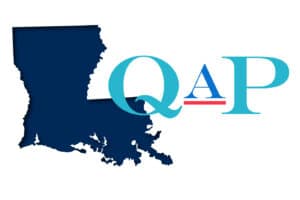New Hampshire Housing will host a hearing on proposed revisions to its 2023-2024 QAP on December 15 from 3 to 4 p.m. ET. The hearing will be held both in-person at 32 Constitution Drive, Bedford, NH and virtually. Please RSVP to multifaminfo@nhhfa.org by December 13.
In advance of the meeting New Hampshire Housing released the following summary of significant proposed changes. A draft QAP, which incorporates the following changes, will be made available prior to the hearing. Feedback can be sent to QAP@nhhfa.org by December 14
Primary Allocation Priorities (HFA 109.02)
- Add projects that benefit underserved populations and communities to address the shortage of housing for such populations and communities in New Hampshire.
- To promote creating new units in order to meet the housing demands in New Hampshire, remove preservation as a primary allocation priority.
Primary Program Policies (HFA 109.04)
- Consider keeping the high-cost limits that were approved by the Board as a “blanket waiver” based on assessment of construction costs by staff.
- The Maximum LIHTC allocation that a general occupancy project may receive in a single funding round is $880,000 and age-restricted is $660,000.
- The total development cost (TDC) weighted average limit is $281,750; $299,000 for high costs projects.
- The TDC (not weighted) per unit limit is $333,500.
- The investment limit, which includes capital subsidy and LIHTC equity, is $230,000.
Application Process (HFA 109.05)
- Healthy Housing Threshold Requirement
- Sponsors are required to outline a brief plan (300 words maximum) on how they will incorporate healthy housing development principles in the project. Healthy housing is a broad concept defined by innovative design to improve occupant health outcomes. Some examples of how sponsors can satisfy this threshold requirement are listed below:
- Strategies that improve indoor air quality
- Features that encourage physical activity
- Common space, community gardens, and playgrounds
- Exercise facilities and walking paths
- Year 15 Investor Exit and Aggregators Threshold Requirement
- Sponsors must commit to selecting a syndicator and/or investor acceptable to New Hampshire Housing. The syndicator/investor cannot have been involved in any “aggregator” activity in New Hampshire seeking to undermine the exercise of a LIHTC right of first refusal or right of first option, including, without limitation:
- Refusal to honor a LIHTC right of first refusal or right of first option in favor of a non-profit sponsor executed with the initial tax credit equity closing for a LIHTC project,
- Lawsuit against a general partner and/or a non-profit sponsor challenging the exercise of the LIHTC right of first refusal/right of first option, and
- Lawsuit seeking to remove the general partner or managing member of the LIHTC limited partnership, absent clear evidence of fraud or serious mismanagement on the part of the general partner or managing member. For purposes of this provision, actions taken to preserve affordability of a LIHTC property and/or management in furtherance of the charitable mission of the non-profit sponsor shall not constitute “serious mismanagement.”
- Sponsors are required to disclose whether any member of the development team, including the investor, has been involved in transfers of ownership or interest, including Qualifies Contract requests, that resulted in affordable housing being converted to market rate prior to the end of the original period of affordability in New Hampshire.
- Sponsors are required to disclose whether any member of the development team, including the investor, has been involved in litigation related to the transfer of ownership or interest of affordable housing in New Hampshire prior to the end of the original period of affordability.
- Require provisions be included in partnership agreements/Right of First Refusal:
- Grant the not-for-profit organization a ROFR that is not conditioned upon consent from the investor, nor conditioned upon receipt by the owner of a bona fide offer from any party, including a third party for the exercise thereof.
- Authorize and direct the general partner of the owner to execute all documents necessary to effect the sale and transfer pursuant to the ROFR.
- Acknowledge that the investor’s return on investment is primarily in the form of the tax benefits conferred by the Code and will not, upon exercise of the ROFR, include any cash proceeds attributable the project’s appreciation in value.
- Provide that the investor will recognize that the ROFR permitted by Section 42(i)(7) is not the same as a ROFR under state statutory, court-interpreted or common law.
- Provide that the term of the ROFR shall be not less than 24 months from the end of the compliance period.
- Provide that the ROFR will not be adversely affected or limited by any other rights of the investor, such as forced sale rights, and there are no conditions to exercise of the ROFR other than it may not be exercised if the general partner is both (a) related to the not-for-profit and (b) removed due to a material default after all notice and cure periods have expired.
- Provide that in the event that the safe harbor in section 42(i)()7) is amended by Congress to permit a nonprofit to hold a purchase option after year 15, to the extent permitted under revised section 42(i)(7), the terms of the ROFR agreement will be converted to a purchase option permitting a transfer though acquisition of partnership interests and including all partnership assets for the statutory purchase price.
- Provide that the limited partner must obtain the consent of the general partner before there is any transfer of the limited partnership interest.
Threshold Criteria (HFA 109.06, HFA 109.08, and Appendix I)
- Services/Service Coordination
- In lieu of submitting a Service Coordination Plan and Budget, sponsor may opt to pursue the CORES Certification (CORES recognizes organizations that have developed a robust commitment, capacity and competency in providing resident service coordination).
- Add option for virtual service coordination for services that can reasonably be conducted by phone or video
- Revise Minimum Scoring Threshold Requirements
- General Occupancy: Increase from 85 to 100 points
- Age-Restricted: Increase from 80 to 95 points
- For an age-restricted project to be selected over higher scoring general occupancy projects (to meet the requirement to fund one age-restricted project in each application round), that project must score at least 100 points.
- Preservation/Recapitalization: Increase from 95 to 110 points
- At least eight of the 110 points must be awarded in accordance with the Preservation Scoring Matrix.
Scoring (HFA 109.07.A)
- Project applications for tax-exempt bonds with 4% LIHTCs will now be scored in accordance with the threshold and scoring criteria from the tax-exempt bond 4% LIHTC NOFA (new Appendix N).
- Income Targeting
- Removed points for having at least 40 percent of the units designated as market rate units.
- Supportive Housing
- To strongly encourage the creation of more supportive housing units in LIHTC properties:
- Increase points awarded for supportive housing for general occupancy projects serving only homeless or Veterans from 15 points to 25 points.
- Increase points awarded for general occupancy and age-restricted projects that reserve 10% to 25% of all units for households that include a member who is intellectually disabled, physically disabled, suffering from severe mental illness and participating in the 811 PRA program (811 is only permitted in general occupancy projects), a veteran, homeless or at imminent risk of homelessness immediately prior to tenancy from 10 points to 20 points.
- Location
- To rely on New Hampshire specific data, replace the Enterprise Opportunity 360 Index (which is being retired on December 31, 2021) with a new High Opportunity Index with scores based on the following indices by census tract: prosperity, education, housing, and health.
- Advanced Projects
- To ensure project feasibility, for projects with four percent and nine percent phases being developed concurrently:
- To be considered for points, a letter of interest from an investor must be submitted with the application that outlines basic terms of the agreement, including the estimated equity rate.
- Additionally, the four percent phase of the project must be a mixed-income development with at least 55 units.
- Community Development Component
- Remove points category which awarded ten points to projects, which are located in formally designated community revitalization areas such as Main Street Programs.
- Developer Experience with NHHFA
- In the event that a sponsor does not fulfill a points commitment made in a previous LIHTC application, a points penalty for an amount equal to that scoring category will be applied to the sponsor’s next application.
- Sponsors who can document a good faith effort to satisfy the commitment will not be penalized.
- A points penalty (4) will be applied to the next application for sponsors who pursue a qualified contract. An exception may be made if the sponsor documents that the investor is driving the request rather than the general partner.
- Community Room
- Two points will be awarded projects that provide free Wi-Fi in the property’s community room and restrict access to the Wi-Fi to residents only.
Allocation Process (HFA 109.08)
- Carryover Allocation Requirements (applicable to nine percent LIHTC projects only)
- An additional cost certification to audit the general contractor or construction manager will be required in cases where there is an identity of interest between the developer and either of the construction manager or general contractor.
- Unused Credits
- Unused credits that are returned more than 60 days before the next preliminary application due date will be offered to projects that applied in the funding round immediately prior to the return of credits. Unused credits returned within 60 days of the next preliminary application due date, will be made available in that upcoming round.
Preservation Scoring Matrix (Appendix L)
- Projects where 100 percent of units have rental assistance for at least five years will be awarded eight points.
- Projects where 50 percent of units have rental assistance for at least five years will be awarded four points.
- Projects where 20 percent of units have rental assistance for at least five years will be awarded two points.
- Points for total number of units preserved will be removed. Preserving properties at the highest risk of loss is more critical than the size of the project.


